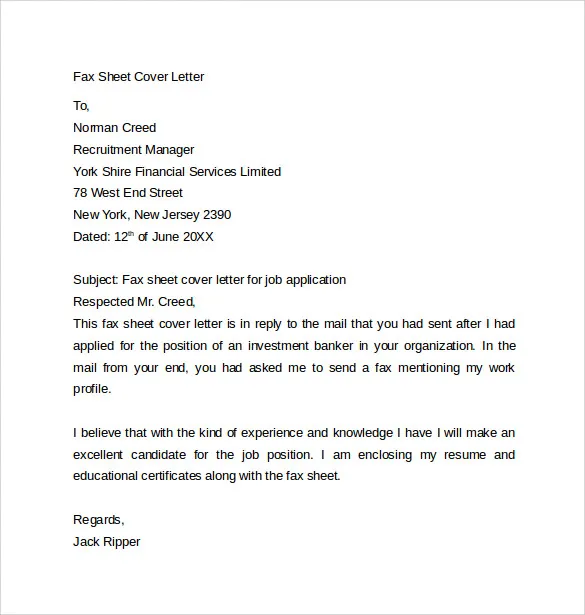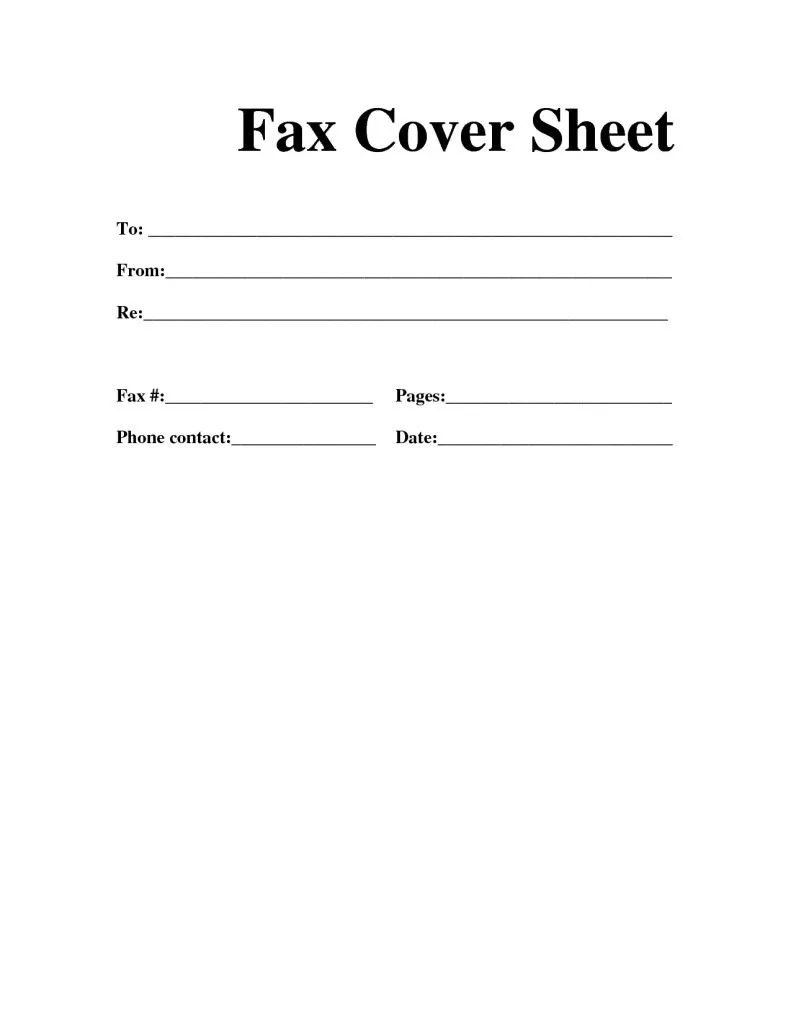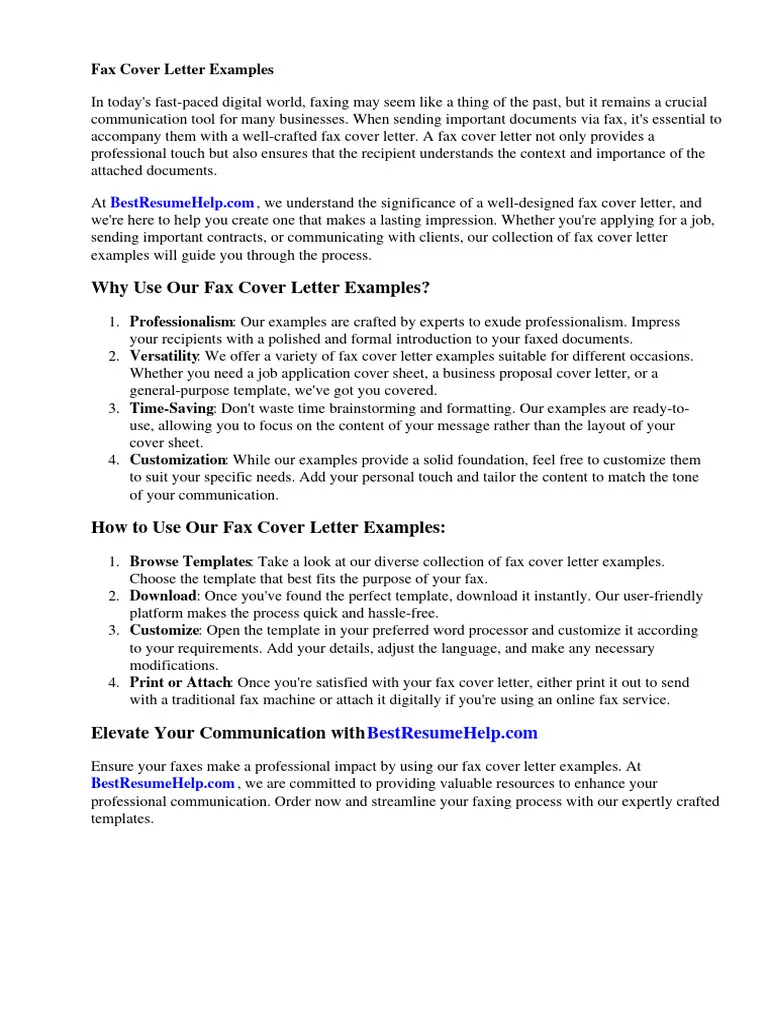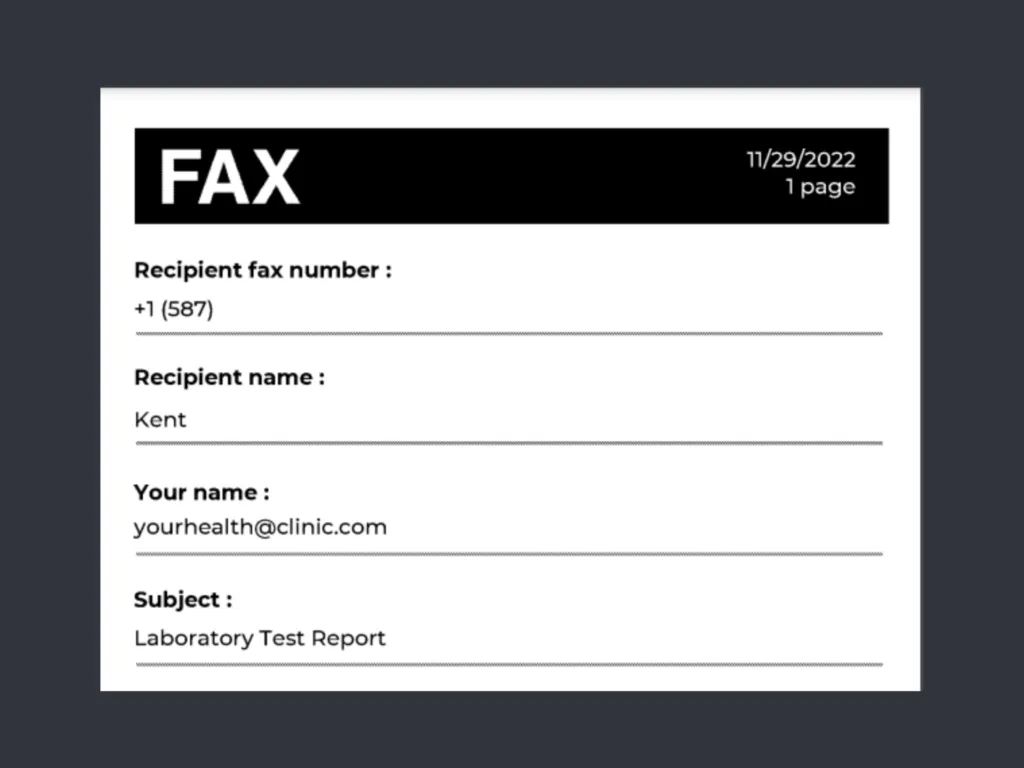What is a Fax Cover Letter?
A fax cover letter is a brief document that accompanies a fax transmission. Its primary purpose is to introduce the fax, providing context and essential information to the recipient. Think of it as a digital handshake, ensuring the recipient knows who the fax is from, what it contains, and why they are receiving it. In today’s digital world, faxes might seem a bit outdated, but many businesses and organizations still rely on them for secure and legally binding document transmission. A well-crafted cover letter is critical, whether sending sensitive legal documents or simply transmitting routine paperwork, as it ensures the recipient understands the context of the fax, reducing the risk of misinterpretation or delays.
Why is a Fax Cover Letter Important?
The importance of a fax cover letter lies in its ability to enhance communication and professionalism. Without a cover letter, the recipient might receive a document without any context, leading to confusion or even its being overlooked. A cover letter immediately identifies the sender, the purpose of the fax, and any necessary instructions. It’s also a matter of professional courtesy. A well-written cover letter conveys that you care about the recipient’s time and attention, and it shows that you have taken the time to ensure clarity and accuracy. Furthermore, it helps in legal and business situations where a clear audit trail is critical. The cover letter serves as a record, confirming the date, sender, and intended recipient of the fax, offering valuable documentation and safeguarding against misunderstandings or disputes.
Key Components of a Fax Cover Letter

A comprehensive fax cover letter includes several key elements to ensure clarity and professionalism. Each component plays a crucial role in making your fax easy to understand and process. These parts work together, guaranteeing that your fax transmission is well-received and immediately understandable by the recipient. Understanding these fundamental components empowers you to create a cover letter that effectively introduces your fax and facilitates seamless communication, whether it is for professional documentation or business-related correspondence.
Sender Information
At the top of your cover letter, include your contact information. This typically includes your full name, your company or organization name (if applicable), your fax number, phone number, and email address. This information is vital for the recipient to quickly identify the sender and easily respond or contact you. Ensure that the fax number provided is accurate, as this is the primary method for the recipient to contact you. Include a complete and accurate address, as it adds a layer of professionalism and aids in potential postal correspondence. This information ensures that the recipient can quickly identify the sender and establish communication if necessary.
Recipient Information
Directly below the sender’s information, clearly state the recipient’s details. Include the recipient’s full name (or the name of their department, if sending to a department), the name of their company or organization, and their fax number. This is essential for directing the fax to the correct person or department. Verifying the recipient’s fax number is paramount, as sending a fax to the wrong number can lead to confidentiality breaches or delivery failures. If you are sending to a department, make sure you are addressing the right department. Accurate recipient information is crucial for the proper delivery of the fax and maintaining professional communication.
Date and Subject Line

The date of the fax transmission should be included to establish when the document was sent. Place this at the top of the cover letter, usually near the sender and recipient information. A concise subject line provides an immediate indication of the fax’s content. This helps the recipient quickly understand the subject of the document, allowing for faster processing. For example, use subject lines such as ‘Invoice,’ ‘Contract Amendment,’ or ‘Meeting Minutes.’ The date and subject line are fundamental for organization and quick reference, as they provide immediate context and aid in the efficient management of documents by the recipient.
Greeting and Body
The greeting should be professional and appropriate. Common greetings include ‘Dear Mr./Ms. [Last Name],’ or ‘To Whom It May Concern’ if you do not know the recipient’s name. The body of the cover letter should be concise and clearly state the purpose of the fax, the contents of the attached document, and any actions required from the recipient. Be specific and avoid jargon or overly complex language. The body should also include a brief summary of the fax’s contents and emphasize any important points the recipient needs to address. Keep it focused, professional, and direct to facilitate easy comprehension and prompt action from the recipient.
Concise and Professional Language
Use clear, professional language throughout the cover letter. Avoid slang, contractions, and overly casual tones. The language should be formal and respectful, maintaining a tone appropriate for the business environment. Keep your writing concise and to the point, ensuring the recipient can quickly understand the main points. Avoid ambiguity by being direct and specific, and proofread carefully to eliminate any grammatical errors or typos. Clarity and professionalism in language are fundamental for ensuring your fax is easily understood and taken seriously, showing respect for the recipient’s time and position.
State the Purpose of the Fax

Clearly articulate the reason for sending the fax in the body of your cover letter. Explain why the document is being sent, whether it is for information, action, or approval. Provide context if needed, briefly outlining the background of the fax. The purpose should be explicit to help the recipient quickly understand the document’s intent and any relevant context. Specify what the fax contains, such as an invoice, contract, or report, making it easier for the recipient to process the document correctly and take the appropriate action. Clarity of purpose ensures that your message is immediately understood and helps in efficient communication.
Provide Contact Information
In addition to your sender information at the top, reiterate your contact details near the end of the cover letter, especially your phone number and email address. This allows the recipient to easily contact you if they have questions or need to follow up. Include these details to make sure communication is easy. Including your contact information makes sure that the recipient can efficiently communicate and get in touch with you to clarify any doubts, or address any concerns about the documents sent. Including your contact information fosters efficient and effective communication.
Closing and Signature
Use a professional closing such as ‘Sincerely,’ ‘Regards,’ or ‘Best regards.’ Follow this with your full name. If sending a formal document, you might want to include a handwritten signature above your typed name. Signatures add a personal and official touch to the fax. The closing should be polite and appropriate for the business relationship you have with the recipient. The closure along with your name and signature, reinforces the professionalism and legitimacy of the document.
Formatting Your Fax Cover Letter

The formatting of your fax cover letter is crucial for presenting a polished and professional document. Proper formatting ensures that the cover letter is easy to read and visually appealing, making it easier for the recipient to process the information quickly. Attention to formatting details reflects a commitment to quality, boosting the credibility of your message. Proper formatting provides clarity, professionalism, and overall effectiveness of your communication.
Font and Font Size
Choose a clear and easily readable font, such as Times New Roman, Arial, or Calibri. These fonts are standard and readily available, ensuring that the recipient can easily view the document. Select a font size between 10 and 12 points, which is optimal for readability without making the text appear too small or overwhelming. Proper font and size guarantee that the document is easily accessible and readable, improving communication effectiveness and reflecting professionalism.
Margins and Spacing
Use standard 1-inch margins on all sides of your cover letter. This provides enough white space to prevent the document from appearing cramped and makes it easier to read. Use single-spaced text for the body of the letter, and double-space between paragraphs to improve readability. Consistent and appropriate spacing makes sure that the document has a polished appearance, improving the visual organization and making it easier to understand the text.
Proofreading and Editing

Proofread your fax cover letter carefully for any grammatical errors, spelling mistakes, or typos. Use a spell checker to identify any potential errors, but also read through the document manually to catch any errors that a spell checker might miss. Check the content for clarity, ensuring that the message is direct and easy to understand. Edit any unclear or redundant phrases to improve overall readability. Careful proofreading and editing are essential for maintaining professionalism and credibility. A polished cover letter builds trust and reinforces the impact of your message.
Tips for Writing an Effective Fax Cover Letter
Writing an effective fax cover letter involves more than just including the necessary information; it involves strategically structuring your content to maximize impact and facilitate clear communication. Applying these tips ensures your fax cover letter enhances the value of the accompanying document. Applying these practical strategies boosts the effectiveness of your fax transmission, leading to clearer communications and achieving desired outcomes.
Be Clear and Concise
Keep the language in your fax cover letter simple, straightforward, and to the point. Use concise sentences and avoid complex jargon or overly elaborate phrasing. The recipient should quickly understand the purpose of the fax and any actions required of them. Being clear and concise means communicating your message efficiently. This approach improves clarity and shows respect for the recipient’s time, ensuring that the main message is received and understood without delay or confusion.
Use a Professional Tone

Maintain a professional and respectful tone throughout the fax cover letter, suitable for business communication. Avoid slang, contractions, or overly casual language. Use formal and polite language to build trust and maintain a good relationship with the recipient. Ensure the tone is appropriate for the situation and the relationship you have with the recipient. A professional tone conveys respect, helping to build strong communication and ensures your message is taken seriously.
Double-Check the Recipient’s Fax Number
Before sending your fax, meticulously verify the recipient’s fax number. A small mistake can lead to the fax being sent to the wrong person. Ensure that the number is accurate and that the fax machine is functioning correctly. Always double-check the fax number to prevent misdirection or delays. Doing so guarantees your document is sent to the correct destination, ensuring the security of your information, and facilitating successful communication.
Review Before Sending
Always review your fax cover letter before sending it. Check for any errors in formatting, spelling, grammar, and the overall message. Verify that all required information, such as contact details and the recipient’s information, is accurate. A final review helps to eliminate any mistakes that could detract from the professionalism of your communication. A thorough review assures that your fax is clear, accurate, and well-presented, making a positive impression on the recipient.
